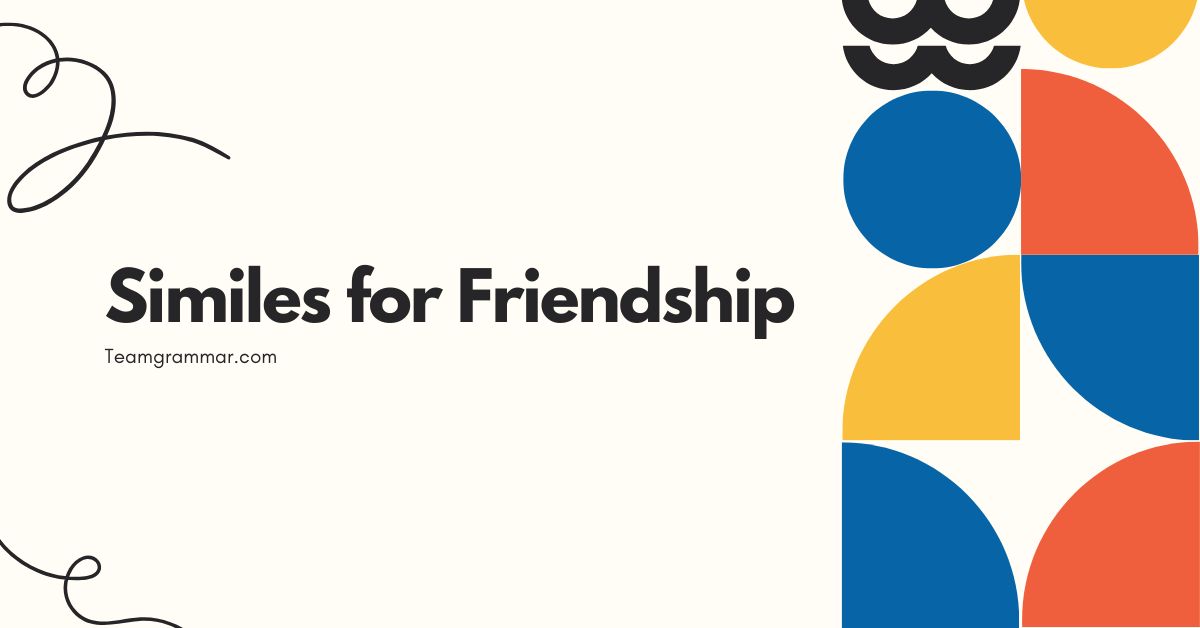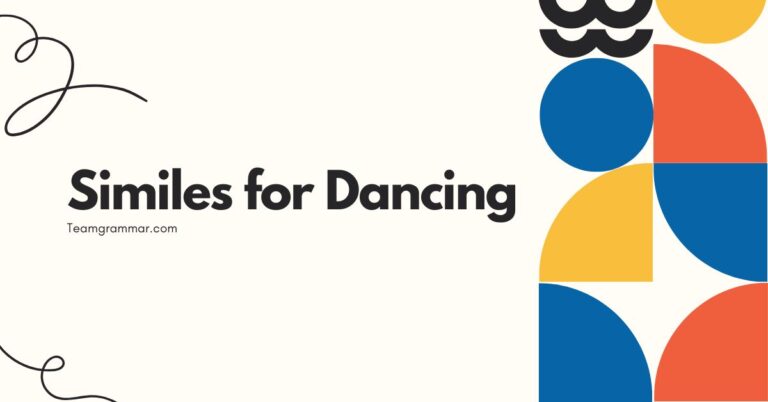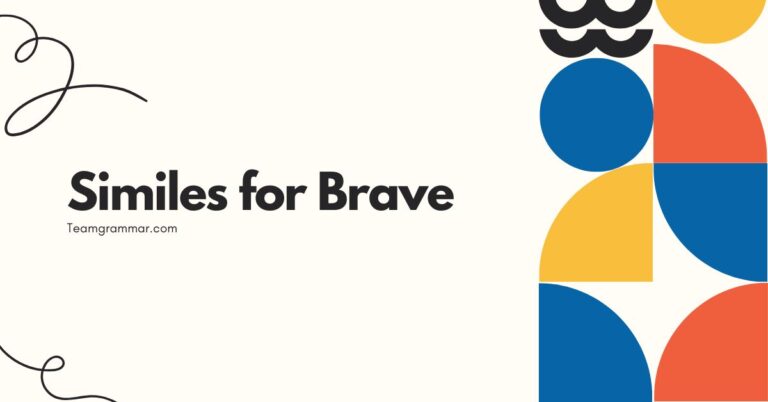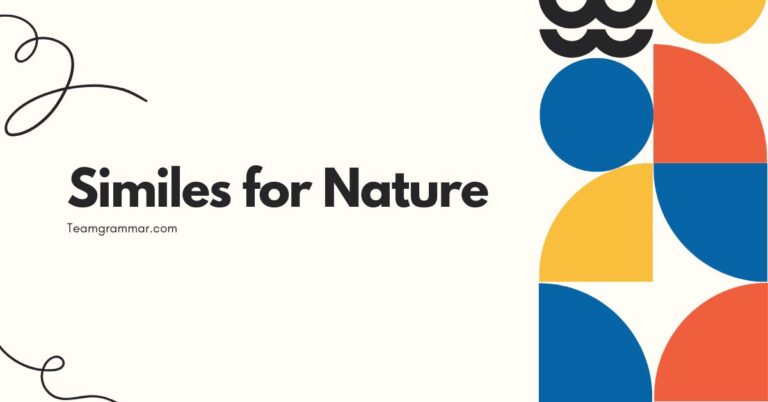33 Similes for Friendship: Expressing Bonds with Figurative Language
Friendship, a cornerstone of human connection, is often best expressed through vivid and relatable language. Similes, a powerful tool in figurative language, allow us to paint a picture of our friendships with striking comparisons.
Understanding and using similes effectively can enrich your writing and speech, making your expressions of friendship more meaningful and impactful. This article explores the world of similes used to describe friends, their qualities, and the nature of your bonds.
This guide is designed for English language learners, writers, and anyone who wants to enhance their vocabulary and expressive abilities.
Table of Contents
- Introduction
- Definition of Simile
- Structural Breakdown of Similes
- Types of Friendship Similes
- Examples of Similes About Friends
- Usage Rules for Similes
- Common Mistakes with Similes
- Practice Exercises
- Advanced Topics in Similes
- Frequently Asked Questions
- Conclusion
Definition of Simile
Asimileis a figure of speech that compares two unlike things using the words “like” or “as.” It’s a way to create a more vivid and imaginative description by drawing a parallel between something familiar and something you want to describe. Similes help to illustrate a point, evoke emotions, or create a more memorable image in the reader’s mind.
They are a common and effective tool in both writing and everyday conversation.
In essence, a simile functions to highlight a shared characteristic between two seemingly dissimilar entities. This comparison allows for a deeper understanding or appreciation of the subject being described.
For example, saying someone is “as brave as a lion” doesn’t literally mean they are a lion; it means they possess the characteristic of bravery that we associate with lions.
Similes are a subset of figurative language, which also includes metaphors, personification, and hyperbole. While similes use explicit comparison words (“like” or “as”), metaphors imply a comparison by stating that one thingisanother.
Understanding the nuances of similes allows for more precise and creative expression.
Structural Breakdown of Similes
The basic structure of a simile consists of three main components: the subject, the comparison word, and the referent. The subject is the thing being described, the comparison word is “like” or “as,” and the referent is the thing to which the subject is being compared.
For example, in the simile “My friend is as loyal as a dog,” “My friend” is the subject, “as” is the comparison word, and “a dog” is the referent. This structure clearly establishes the comparison and makes the meaning easily understandable.
The effectiveness of a simile often depends on the clarity and relevance of the comparison.
While most similes follow this basic structure, there can be variations. For instance, some similes may include additional descriptive words to enhance the comparison.
However, the core elements of subject, comparison word, and referent remain essential for identifying a simile.
Types of Friendship Similes
Similes about friends can be categorized based on the specific aspect of friendship they highlight. These categories include similes for loyalty, support, shared experiences, and personality traits.
Understanding these categories can help you choose the most appropriate simile to express your feelings about your friends.
Similes for Loyalty
Loyalty is a key element of strong friendships. Similes that emphasize loyalty often compare friends to things that are known for their unwavering commitment or reliability.
These similes can convey the depth of trust and dependability that exists within a friendship. They highlight the steadfastness and faithfulness that define a loyal friend.
Similes for Support
Supportive friends are those who stand by you through thick and thin. Similes that describe support often compare friends to things that provide strength, comfort, or assistance.
These similes illustrate the role of a friend as a source of encouragement and help during challenging times. They showcase the unwavering presence and assistance offered by a supportive friend.
Similes for Shared Experiences
Shared experiences create lasting bonds between friends. Similes that focus on shared experiences often compare friends to things that are closely connected or intertwined.
These similes emphasize the common history, memories, and understanding that friends develop over time. They capture the feeling of camaraderie and connection that arises from shared adventures and moments.
Similes for Personality Traits
Friends are often valued for their unique personality traits. Similes that describe personality traits often compare friends to things that embody specific qualities, such as humor, kindness, or intelligence.
These similes allow you to express your appreciation for the individual characteristics that make your friends special. They highlight the unique qualities that contribute to the richness and diversity of your friendships.
Examples of Similes About Friends
Here are several examples of similes categorized by different aspects of friendship. Each category provides vivid comparisons that illustrate the depth and complexity of friendships.
Examples Illustrating Loyalty
The following table provides examples of similes that emphasize the loyalty found in friendships. Each simile compares a friend’s loyalty to something known for its unwavering commitment.
| Simile | Explanation |
|---|---|
| My friend is as loyal as a dog. | Highlights the unwavering faithfulness of a dog. |
| She’s as steadfast as the North Star. | Implies reliability and constant guidance. |
| He’s as true as steel. | Suggests strength and unwavering honesty. |
| Our friendship is as strong as an oak. | Signifies endurance and resilience. |
| He is as reliable as the sunrise. | Implies punctuality and dependability. |
| She is as constant as the sea. | Suggests a never-ending support. |
| He is as faithful as a shadow. | Implies constant presence and loyalty. |
| She is as devoted as a mother to her child. | Highlights unconditional loyalty. |
| He is as unwavering as a mountain. | Suggests steadfastness and stability. |
| She is as dependable as gravity. | Implies a constant and reliable force. |
| He is as solid as a rock. | Highlights stability and reliability. |
| She is as constant as a heartbeat. | Suggests a continuous and vital presence. |
| He is as unyielding as a fortress. | Implies unwavering strength and protection. |
| She is as steadfast as the ground beneath your feet. | Suggests a reliable and stable foundation. |
| He is as trustworthy as a well-worn path. | Highlights reliability and familiarity. |
| She is as loyal as a soldier to their country. | Implies unwavering dedication and commitment. |
| He is as firm as an anchor. | Suggests stability and security. |
| She is as true as her word. | Highlights honesty and integrity. |
| He is as resolute as a judge. | Implies fairness and unwavering commitment to justice. |
| She is as constant as the northern lights. | Suggests a beautiful and reliable presence. |
| He is as devoted as a bee to its hive. | Highlights dedication and hard work. |
| She is as unswerving as a compass needle. | Implies direction and reliability. |
| He is as reliable as the tides. | Suggests a predictable and dependable pattern. |
| She is as staunch as an old friend. | Implies unwavering support and loyalty. |
Examples Illustrating Support
The following table provides examples of similes that highlight the supportive nature of friends. Each simile compares a friend’s support to something that provides strength, comfort, or assistance.
| Simile | Explanation |
|---|---|
| My friend is like a shoulder to cry on. | Implies comfort and emotional support. |
| She’s as supportive as a sturdy bridge. | Suggests strength and stability in difficult times. |
| He’s like a lighthouse in a storm. | Implies guidance and hope during challenges. |
| She is like a warm blanket on a cold day. | Suggests comfort and warmth. |
| He is as encouraging as a coach. | Implies motivation and guidance. |
| She is as helpful as a map. | Suggests direction and assistance. |
| He is as reliable as a first-aid kit. | Implies readiness and help in need. |
| She’s like a cheerleader on the sidelines. | Implies encouragement and positive energy. |
| He’s as comforting as a cup of tea. | Suggests warmth and solace. |
| She is as uplifting as a hot air balloon. | Implies encouragement and positive energy. |
| He is as steady as a walking stick. | Suggests support and balance. |
| She is as reassuring as a doctor’s diagnosis. | Implies comfort and certainty. |
| He is as protective as an umbrella in the rain. | Suggests shielding and care. |
| She is as strengthening as a vitamin. | Implies invigoration and support. |
| He is as grounding as the earth. | Suggests stability and reassurance. |
| She is like a safety net. | Implies security and protection. |
| He is as encouraging as a sunrise. | Suggests hope and new beginnings. |
| She is as nurturing as a garden. | Implies growth and care. |
| He is as dependable as a good pair of shoes. | Suggests reliability and practicality. |
| She is as supportive as a sturdy ladder. | Implies assistance in reaching goals. |
| He is as helpful as a well-stocked toolbox. | Suggests readiness and resourcefulness. |
| She is as comforting as a lullaby. | Implies peace and solace. |
| He is as steady as a mountain climber’s grip. | Suggests resilience and determination. |
| She is as reliable as a well-maintained car. | Implies dependability and smooth progress. |
Examples Illustrating Shared Experiences
The following table provides examples of similes that emphasize the shared experiences between friends. Each simile compares the bond to something that is closely connected or intertwined.
| Simile | Explanation |
|---|---|
| Our memories are like intertwined vines. | Highlights the close connection and shared history. |
| We’re like two peas in a pod. | Implies a close resemblance and shared experiences. |
| Our friendship is like a well-worn path. | Suggests a familiar and comfortable journey together. |
| Our experiences are like beads on a string. | Implies a collection of shared memories. |
| We’re like two branches on the same tree. | Suggests a shared origin and growth. |
| Our adventures are like chapters in a book. | Implies a continuous and evolving story. |
| We’re like two halves of a whole. | Suggests a complementary and complete connection. |
| Our friendship is like a shared secret. | Implies intimacy and understanding. |
| We’re like two fish in the same pond. | Suggests shared environment and experiences. |
| Our laughter is like a shared melody. | Implies harmony and joy. |
| Our stories are like threads in a tapestry. | Suggests a rich and interconnected narrative. |
| We’re like two birds of a feather. | Implies shared interests and compatibility. |
| Our bond is like glue. | Suggests a strong and lasting connection. |
| Our friendship is like a compass and a map. | Implies shared direction and guidance. |
| We’re like partners in crime. | Suggests shared adventures and mischief. |
| Our history is like a shared diary. | Implies intimacy and mutual understanding. |
| We’re like two stars in the same constellation. | Suggests a unique but connected presence. |
| Our jokes are like inside jokes. | Implies a shared sense of humor and understanding. |
| Our memories are like echoes in a canyon. | Suggests lasting impact and resonance. |
| We’re like two leaves on the same branch. | Implies shared origin and destiny. |
| Our friendship is like a shared song. | Suggests harmony and mutual enjoyment. |
| We’re like two peas in a pod. | Implies a close resemblance and shared experiences. |
| Our experiences are like beads on a string. | Implies a collection of shared memories. |
| We’re like two branches on the same tree. | Suggests a shared origin and growth. |
Examples Illustrating Personality Traits
The following table provides examples of similes that highlight the unique personality traits of friends. Each simile compares a friend’s personality to something that embodies specific qualities, such as humor, kindness, or intelligence.
| Simile | Explanation |
|---|---|
| My friend is as funny as a clown. | Highlights the humorous nature of the friend. |
| She’s as bright as a button. | Implies intelligence and quick wit. |
| He’s as kind as an angel. | Suggests a gentle and compassionate nature. |
| She is as graceful as a swan. | Suggests elegance and poise. |
| He is as brave as a lion. | Implies courage and strength. |
| She is as gentle as a lamb. | Suggests tenderness and meekness. |
| He is as wise as an owl. | Implies knowledge and insight. |
| She is as radiant as the sun. | Suggests warmth and positivity. |
| He is as energetic as a hummingbird. | Implies enthusiasm and vitality. |
| She is as calm as a still lake. | Suggests tranquility and peace. |
| He is as charming as a prince. | Implies grace and appeal. |
| She is as fierce as a tiger. | Suggests determination and strength. |
| He is as generous as Santa Claus. | Implies kindness and giving nature. |
| She is as optimistic as a spring morning. | Suggests hope and positivity. |
| He is as patient as a saint. | Implies tolerance and understanding. |
| She is as creative as an artist. | Suggests imagination and innovation. |
| He is as quick-witted as a comedian. | Implies humor and intelligence. |
| She is as loyal as a family member. | Suggests dedication and faithfulness. |
| He is as reliable as a Swiss watch. | Implies punctuality and dependability. |
| She is as resilient as a weed. | Suggests strength and perseverance. |
| He is as sociable as a butterfly. | Implies charm and friendliness. |
| She is as thoughtful as a philosopher. | Suggests depth and consideration. |
| He is as versatile as a chameleon. | Implies adaptability and resourcefulness. |
| She is as zealous as a preacher. | Suggests passion and enthusiasm. |
Usage Rules for Similes
Using similes effectively requires understanding certain rules and guidelines. Here are some key points to keep in mind:
- Use “like” or “as”: Similes must explicitly use the words “like” or “as” to make the comparison.
- Compare unlike things: The two things being compared should be different enough to create a meaningful comparison. Comparing similar things doesn’t create a simile.
- Ensure relevance: The characteristic being compared should be relevant to both the subject and the referent.
- Avoid clichés: While some common similes are effective, try to create original comparisons to make your writing more engaging.
- Maintain clarity: The comparison should be clear and easy to understand. Avoid overly complex or obscure references.
By following these usage rules, you can create similes that are both effective and impactful, enhancing your writing and communication.
Common Mistakes with Similes
Several common mistakes can detract from the effectiveness of similes. Understanding these errors can help you avoid them and create more impactful comparisons.
| Incorrect | Correct | Explanation |
|---|---|---|
| My friend is loyal. | My friend is as loyal as a dog. | Missing the comparison word “as.” |
| He is like a car. | He is as reliable as a car. | The comparison is too broad; needs a specific trait. |
| She is as happy as happy. | She is as happy as a lark. | The comparison is redundant. |
| He is a lion. | He is as brave as a lion. | This is a metaphor, not a simile. |
| She is like a thing. | She is as mysterious as a thing. | The comparison is too vague. |
| He is as tall as a short person. | He is as tall as a giraffe. | The comparison is contradictory. |
| She is like the color blue. | She is as calming as the color blue. | The comparison is too abstract. |
Avoiding these common mistakes will help you create similes that are clear, relevant, and effective.
Practice Exercises
Test your understanding of similes with these practice exercises. Identify the similes in the sentences and explain what is being compared.
| Question | Answer |
|---|---|
| 1. My friend is as supportive as a sturdy bridge. | Simile: “as supportive as a sturdy bridge.” Comparison: Friend’s support to a bridge’s strength. |
| 2. She’s like a warm blanket on a cold day. | Simile: “like a warm blanket on a cold day.” Comparison: Friend’s comfort to the warmth of a blanket. |
| 3. He is as funny as a clown. | Simile: “as funny as a clown.” Comparison: Friend’s humor to a clown’s comedic nature. |
| 4. Our memories are like intertwined vines. | Simile: “like intertwined vines.” Comparison: Shared memories to intertwined vines. |
| 5. She is as bright as a button. | Simile: “as bright as a button.” Comparison: Friend’s intelligence to the shine of a button. |
| 6. He’s as comforting as a cup of tea. | Simile: “as comforting as a cup of tea.” Comparison: Friend’s comforting nature to the warmth and solace of tea. |
| 7. Our friendship is like a well-worn path. | Simile: “like a well-worn path.” Comparison: The comfort and familiarity of the friendship to a well-trodden path. |
| 8. She is as fierce as a tiger. | Simile: “as fierce as a tiger.” Comparison: Friend’s strength and determination to the fierceness of a tiger. |
| 9. He is as reliable as the sunrise. | Simile: “as reliable as the sunrise.” Comparison: Friend’s dependability to the predictable nature of the sunrise. |
| 10. We’re like two peas in a pod. | Simile: “like two peas in a pod.” Comparison: The close resemblance and shared experiences of the friends to two peas in the same pod. |
Exercise 2: Complete the following sentences with appropriate similes about friends.
| Question | Answer |
|---|---|
| 1. My friend is as ______ as ______. | My friend is as generous as Santa Claus. |
| 2. She’s like ______ in ______. | She’s like a lighthouse in a storm. |
| 3. He is as ______ as ______. | He is as brave as a lion. |
| 4. Our memories are like ______. | Our memories are like intertwined vines. |
| 5. She is as ______ as ______. | She is as calm as a still lake. |
| 6. He is as ______ as ______. | He is as quick-witted as a comedian. |
| 7. She is like ______ on ______. | She is like a cheerleader on the sidelines. |
| 8. He is as ______ as ______. | He is as versatile as a chameleon. |
| 9. She is as ______ as ______. | She is as resilient as a weed. |
| 10. We are like ______ in ______. | We are like two fish in the same pond. |
Advanced Topics in Similes
For advanced learners, exploring the nuances of similes can lead to more sophisticated writing. Consider these advanced topics:
- Subverting expectations: Create similes that challenge conventional comparisons to add depth and complexity.
- Combining similes: Use multiple similes in a single sentence to create a more layered description.
- Similes in different contexts: Analyze how similes are used in literature, poetry, and everyday conversation.
- Cultural variations: Explore how similes differ across cultures and languages.
By delving into these advanced topics, you can further refine your understanding and use of similes.
Frequently Asked Questions
Here are some frequently asked questions about similes:
- What is the difference between a simile and a metaphor?
A simile uses “like” or “as” to compare two things, while a metaphor directly states that one thing is another. Similes make an explicit comparison, whereas metaphors imply a comparison.
- Why are similes useful in writing?
Similes make writing more vivid and engaging by creating memorable images and helping readers understand abstract concepts through relatable comparisons. They enhance descriptive power and emotional impact.
- Can a simile be too cliché?
Yes, overused similes can become clichés and lose their impact. It’s best to create original comparisons to make your writing more fresh and engaging. However, some well-known similes remain effective when used appropriately.
- How do I create a good simile?
To create a good simile, choose two unlike things that share a relevant characteristic. Use “like” or “as” to make the comparison clear and ensure that the comparison is easy to understand and adds depth to your description.
- Are similes only used in writing?
No, similes are used in both writing and everyday conversation. They are a common way to make descriptions more vivid and expressive in spoken language as well.
- Is it okay to use multiple similes in one sentence?
While it’s possible to use multiple similes in one sentence, it’s important to do so judiciously. Too many similes can make the sentence cluttered and confusing. Use them sparingly and make sure each comparison adds value.
- How can I avoid using clichés when writing similes?
To avoid clichés, think outside the box and try to come up with unique and unexpected comparisons. Consider the specific qualities you want to highlight and brainstorm unusual things that share those qualities. Read widely to expose yourself to different writing styles and techniques.
- Can a simile be a question?
While less common, a simile can be phrased as a rhetorical question to emphasize a comparison. For example, “Is my friend as loyal as a dog? Absolutely!” This can add emphasis and engagement to the comparison.
- How do similes enhance understanding of abstract ideas?
Similes make abstract ideas more concrete by relating them to tangible or familiar things. This helps readers grasp complex concepts more easily by providing a relatable point of reference. For example, describing love as “like a warm fire” makes the abstract emotion more understandable and vivid.
- What role do similes play in poetry?
Similes are a fundamental tool in poetry, contributing to imagery, rhythm, and emotional depth. They allow poets to convey complex feelings and ideas in a concise and evocative manner, enriching the reader’s experience and creating a more memorable impact.
Conclusion
Similes are a powerful tool for enhancing our descriptions of friendship, adding depth and vibrancy to our expressions. By understanding the structure, types, and usage rules of similes, you can effectively convey the unique qualities and bonds that define your friendships.
Remember to use original comparisons, avoid clichés, and maintain clarity in your writing.
Practice incorporating similes into your everyday language and writing to strengthen your expressive abilities. Experiment with different types of comparisons and analyze how similes are used in various contexts.
With dedication and creativity, you can master the art of using similes to create meaningful and impactful descriptions of your friendships.







